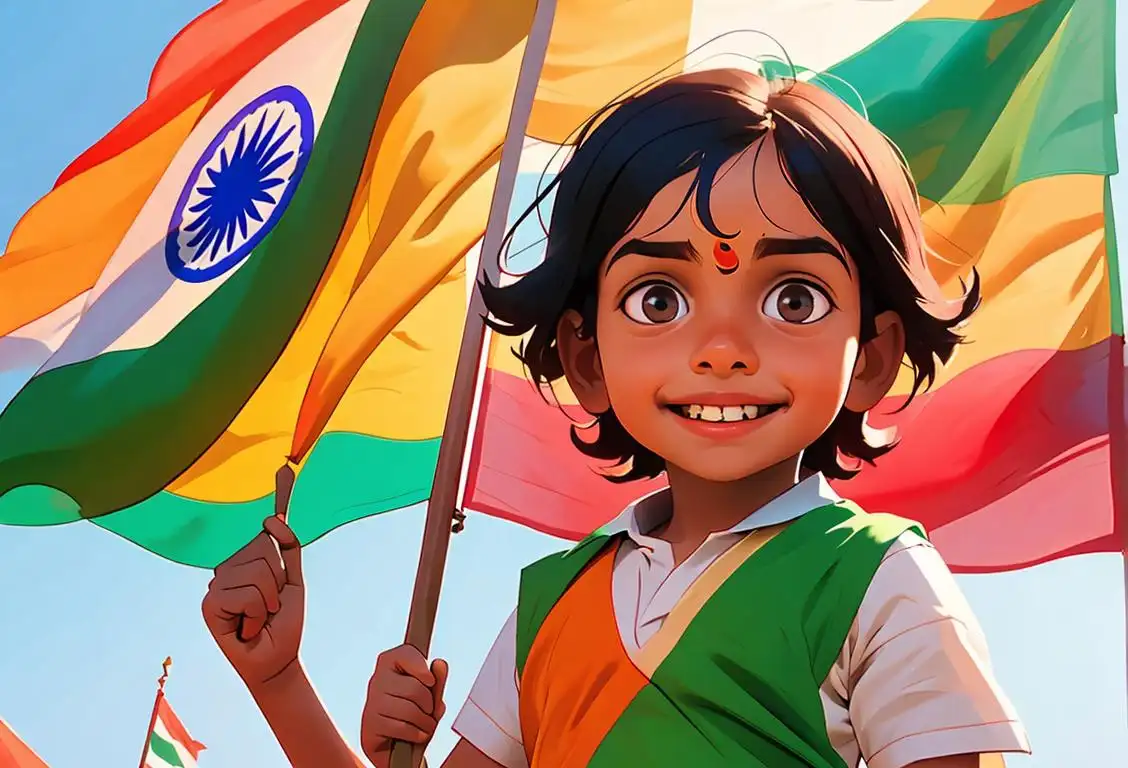National Flag Of India On Republic Day

Did you know that the Indian flag holds a significant and cherished place in the hearts of millions of Indians? On Republic Day, this national symbol is celebrated with great pride and enthusiasm. Let's dive into the fascinating history and meaning behind the national flag of India!
When is Flag Of India On Republic Day?
It's national flag of india on republic day on the 26th January.
The National Flag of India
The National Flag of India, also known as the 'Tiranga,' is a symbol of sovereignty, pride, and unity for the people of India. This tricolor flag is characterized by three horizontal bands of saffron, white, and green, with the Ashoka Chakra in navy blue at its center.
The saffron color represents courage, sacrifice, and renunciation. It reflects the spirit of selflessness and fearlessness that is deeply ingrained in the Indian culture and history. The white color symbolizes purity, truth, and peace, while the green color represents fertility, growth, and auspiciousness.
The Ashoka Chakra, a 24-spoked wheel, is a representation of power, righteousness, and progress. It was adopted from the Lion Capital of Ashoka, one of India's ancient emblems, to signify the country's eternal values.
On Republic Day, which is celebrated on the 26th of January every year, the Indian flag is hoisted with great honor and respect throughout the country. The flag-hoisting ceremony is accompanied by the national anthem, 'Jana Gana Mana,' creating a sense of unity and patriotism among the citizens.
The Historical Significance
The journey of India's national flag began during the Indian National Congress session in 1921. A resolution was passed to adopt a tricolor flag as the symbol of India's independence. Many designs were proposed before the final version of the flag was selected.
The credit for designing the current Indian flag goes to Pingali Venkayya, an Indian freedom fighter and agriculturist. His design, with the spinning wheel at the center, impressed Mahatma Gandhi, who suggested the inclusion of the spinning wheel to represent the significance of self-reliance and empowerment.
The flag was first hoisted on 31st December 1929 at the Lahore session of the Indian National Congress. This historic moment marked the demand for complete independence (Purna Swaraj) from British rule.
After gaining independence on 15th August 1947, the Indian flag became the official symbol of the nation. The Ashoka Chakra replaced the spinning wheel, signifying the country's transition from a struggle for independence to a united and independent Republic.
Did You Know?
Did you know that the national flag of India is never flown at half-mast? The flag is a symbol of pride, and flying it at half-mast can create an atmosphere of mourning. Instead, a black ribbon is attached at the top of the flag to honor the demise of a national figure.
History behind the term 'Flag Of India On Republic'
1921
The Swaraj Flag
The first step towards the flag of India on Republic was taken in 1921 when the Indian National Congress adopted the Swaraj Flag. It was designed by Pingali Venkayya, an Indian freedom fighter and agriculturist from Andhra Pradesh. The flag featured a horizontal tricolor of saffron, white, and green, representing courage, peace, and prosperity respectively. It also included a spinning wheel in the center, symbolizing the progress of rural India.
1947
Independence and the Proposed Flag
In 1947, India gained independence from British rule. As the country embarked on its journey as a sovereign nation, the need for a new flag arose. The flag proposed by Pingali Venkayya, which resembled the Swaraj Flag with the addition of a blue chakra in the middle to represent the Wheel of Law, was considered. However, this flag was not officially adopted.
1947
The Constituent Assembly and the Flag Committee
Following independence, the Constituent Assembly of India was entrusted with the task of drafting the Constitution. The Assembly formed a Flag Committee, headed by Dr. Rajendra Prasad, to finalize the design of the national flag. The committee received several proposals and suggestions from various individuals and groups across the country.
1947
The Adoption of the Tricolor Flag
After much deliberation, the Flag Committee selected a design proposed by Pingali Venkayya, which closely resembled the Swaraj Flag. The only change made was the removal of the spinning wheel and the introduction of the Ashoka Chakra in place of the blue chakra. The Ashoka Chakra, with 24 spokes, represents the wheel of dharma (righteousness) and signifies India's progress and dynamic nature. The tricolor flag, with saffron on top symbolizing courage, white in the middle representing peace, and green at the bottom signifying prosperity, was officially adopted as the national flag of India on 22nd July 1947.
1950
India becomes a Republic
On 26th January 1950, India became a Republic with the enforcement of the Constitution. The national flag, which had been adopted in 1947, took on even greater significance as it now represented the sovereignty and democratic values of the newly formed republic. The flag of India on Republic continues to be a proud symbol of the nation's freedom and unity.
Did you know?
Did you know that the national flag of India is never flown at half-mast? The flag is a symbol of pride, and flying it at half-mast can create an atmosphere of mourning. Instead, a black ribbon is attached at the top of the flag to honor the demise of a national figure.Tagged
awareness funFirst identified
30th January 2018Most mentioned on
26th January 2021Total mentions
4727Other days
Nurses Day
Former Prisoner Of War Recognition Day
Press Day
Handloom Day
Heroes Day
Memorial Day
Dance Day
Bestfriends Day
Liberation Day
Love Your Pet Day









